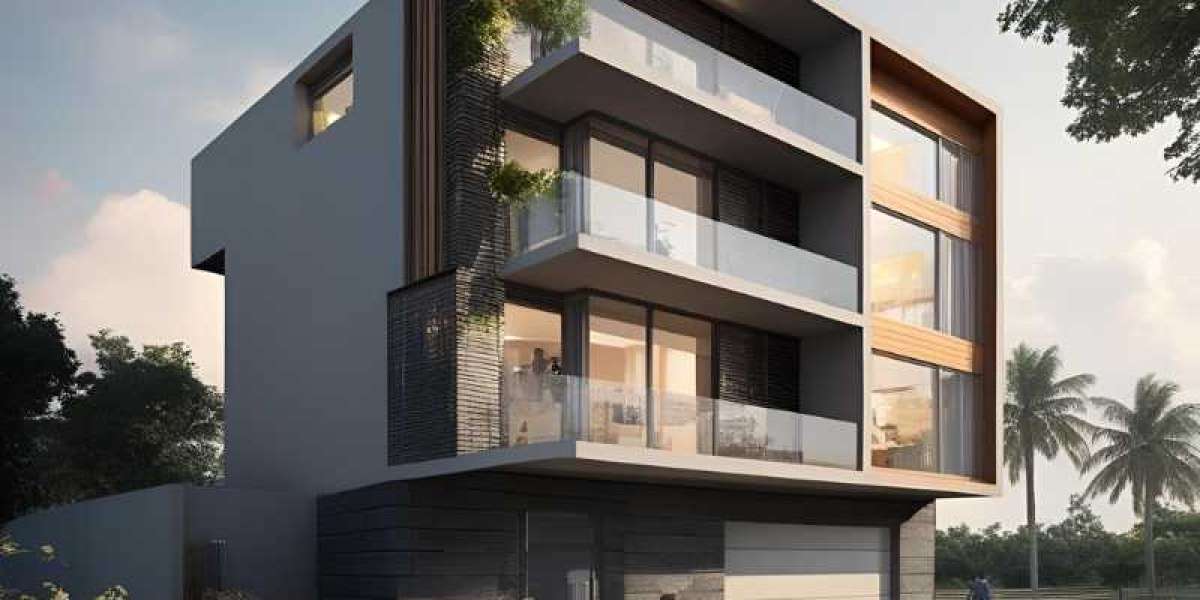In the world of architecture and design, visualizing a project before it's built is essential. Architectural 3D rendering is a powerful tool that brings ideas to life by creating realistic, computer-generated images of buildings and spaces.
It bridges the gap between concept and reality, allowing architects, designers, and clients to see and refine every detail before construction begins.
But why has 3D rendering become such a crucial part of the design process? From improved communication to cost savings and enhanced marketing, this technology plays a key role in how modern architecture is planned, presented, and perfected.
What Is Architectural 3D Rendering?
Architectural 3D rendering is the process of creating realistic images of buildings and spaces using a computer. These images show what a building will look like before it is built. Architects, designers, and real estate developers use 3D rendering to present their ideas clearly and attractively.
This process starts with a 3D model, which is like a digital version of the building. The model includes walls, roofs, windows, and other parts of the design. Then, special software adds colors, textures, lighting, shadows, and even furniture or plants to make the image look real.
There are different types of 3D renderings. Some show the outside of a building (exterior renderings), while others show the inside (interior renderings). Some renderings are still images, and others are animations or virtual tours that let viewers “walk through” a space.
Architectural 3D rendering helps clients and builders understand a project better. It makes it easier to make changes before construction starts, saving time and money. It also helps with marketing by showing the final design in a beautiful and realistic way.
In short, architectural 3D rendering is a powerful tool in modern building design. It brings ideas to life and helps everyone involved in a project to see the final result clearly. This makes planning and decision-making faster, easier, and more effective.
Why Architectural 3D Rendering Matters
Architectural 3D rendering is a way to create realistic images of buildings before they are built. It uses computer software to show how a house, office, or any other structure will look in real life. This helps people understand the design better than just looking at 2D drawings or blueprints.
One big reason 3D rendering is important is that it helps architects and clients see the full picture. You can view the design from different angles, see how light affects the space, and even add furniture, plants, or people to make it more lifelike. This makes it easier for everyone to spot problems and make changes early, saving time and money.
It also helps in presentations and marketing. Real estate developers and designers use 3D renderings to show future buildings to buyers or investors. A clear and attractive image makes it easier to explain ideas and get support or approval.
3D rendering is also useful for builders and construction teams. It gives them a better guide for what to build and helps avoid mistakes.
In short, architectural 3D rendering brings ideas to life. It helps in planning, improves communication, and makes sure everyone involved in the project is on the same page. With technology getting better every day, 3D rendering is becoming an essential part of modern architecture.
Industries and Professionals Who Use Architectural 3D Rendering
Architectural 3D rendering is a powerful tool used to create realistic images of buildings and spaces before they are built. This helps people see what a project will look like in the future. Many industries and professionals use 3D rendering to plan, design, and present their ideas better.
Architects are the main users of 3D rendering. They use it to show clients how a building will look and feel. It helps clients understand the design more clearly than looking at drawings or blueprints.
Real estate developers use 3D rendering to attract buyers or investors. They can show a property in its best light, even if it hasn’t been built yet. This helps sell homes or buildings faster.
Interior designers use 3D rendering to plan room layouts, furniture, colors, and lighting. It helps clients see the design and suggest changes before the work begins.
Construction companies use 3D rendering to plan their work and avoid mistakes. It helps workers understand the final look and structure of the building.
Marketing agencies and advertising professionals also use 3D rendering to create ads and brochures for real estate projects. It helps make projects look attractive and modern.
Even urban planners and landscape designers use it to show how outdoor spaces, parks, and streets will look.
Overall, 3D rendering is useful for anyone involved in building, designing, or selling properties. It saves time, reduces mistakes, and helps people make better decisions.
The Future of 3D Rendering in Architecture
The future of 3D rendering in architecture is bright, with technology rapidly evolving to bring new possibilities to the field. 3D rendering allows architects to create highly detailed and realistic images of buildings before they are even built. In the future, we can expect even more advanced tools that will make these images look even more lifelike and interactive.
One of the biggest changes will be the use of virtual reality (VR) and augmented reality (AR). These technologies will let clients and architects walk through 3D models of buildings in real-time. Instead of just viewing static images, they will experience the space as if it were already built. This can help architects make better design decisions and allow clients to provide feedback early in the process.
Artificial intelligence (AI) is also expected to play a bigger role in 3D rendering. AI can help automatically adjust lighting, textures, and materials to create more realistic and accurate designs. It can even predict how certain design changes might impact the overall look and feel of the space.
As rendering software becomes more powerful and accessible, architects will be able to create more complex and detailed designs. The future of 3D rendering in architecture will make it easier to visualize, plan, and build structures, bringing designs to life in ways that were once only possible in the imagination.
The End Note
In conclusion, architectural 3D rendering has revolutionized the design and construction process, offering a clear, realistic visualization of buildings before they are built. By transforming concepts into lifelike images, this technology enables architects, designers, real estate developers, and construction teams to refine designs, reduce mistakes, and enhance communication.
It serves as an invaluable tool for presenting ideas to clients and investors, facilitating better decision-making, and improving the overall planning process. As technology continues to advance, the future of 3D rendering promises even more immersive experiences, with virtual and augmented reality, as well as artificial intelligence, playing a larger role in shaping the way we approach architecture.
Ultimately, architectural 3D rendering is an essential tool that not only saves time and money but also brings visions to life in ways that make the design process more efficient, precise, and creative.








